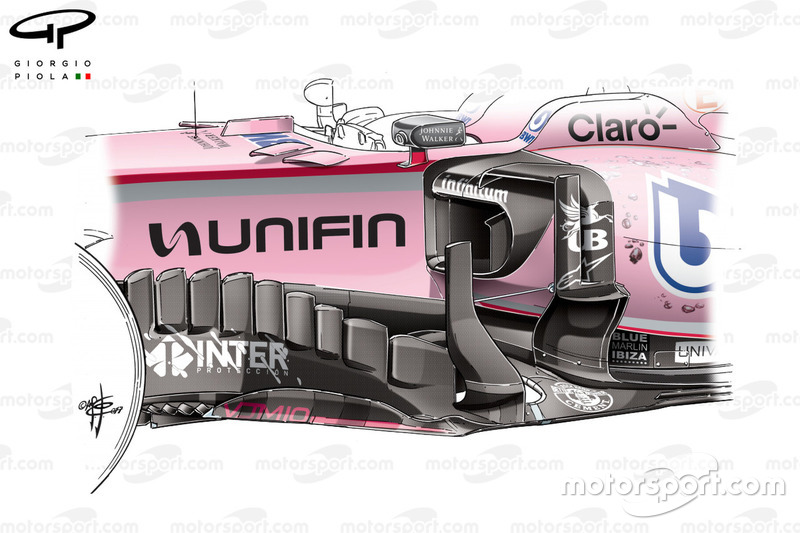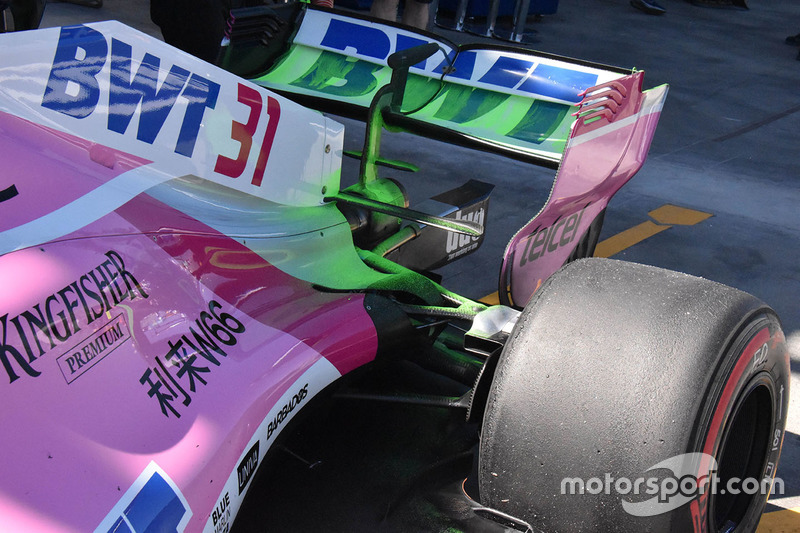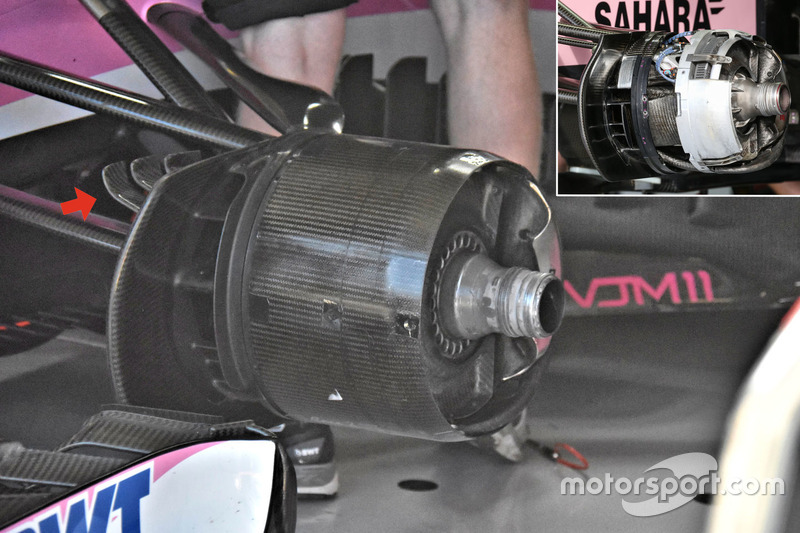Analysis: Force India’s 'attacking' new Melbourne update
Force India is under no illusions how tough it will be in 2018 to maintain its place as best-of-the-rest behind the big three teams in Formula 1.

Photo by: Andrew Hone / Motorsport Images
But even with big money rivals like McLaren and Renault poised for a breakthrough, Force India’s brilliance in punching above its weight in recent years has left it convinced it can put up a good fight again this season.
Having been solid if unspectacular in testing, the Silverstone-based team had pinned its hopes of progress on a major update package for the start of the season – something which emerged on Friday in Melbourne.
The developments were extensive, with technical director Andy Green clear that the only part not changed yet was the front wing.
“It touches most areas as far as aerodynamics are concerned,” he said. “Everything apart from the front wing has changed. The front wing will be next race – and it was always going to be the race after.”
Although it is still early days for the new parts, Green was happy with the job done, and more especially the feedback from the drivers.
“So far it looks good. The drivers are happy, they can feel a big difference from Barcelona. We just need to set the car up differently now from where we migrated to in Barcelona. They can attack the corners harder basically, which is what we were hoping they were going to say.
“Now it’s changed the way the car works, the way it works the tyres, so we’re having to go through that loop again now to re-optimise.”
Here, Matt Somerfield looks in detail at the changes that Force India has made.
Aero push
The team felt that having its full 2018 aerodynamic specification available for the pre-season tests was going to put too significant a demand on it resources. So instead it opted to focus on shaking down and testing its new car in a well known configuration, as the new car was dressed in last year’s bodywork.
An area where Force India has focused its update efforts is around the sidepod’s flank, as it has reshaped the vertical airflow conditioners (blue arrow) which had previously been split into two. They now form just a solo arch that borders the sidepod itself.
The forward deflector element that was introduced during the latter part of 2017 (see above for overall comparison) now forms the leading edge of the overall quartet of elements. These deflect the wake generated by the front tyre away from the sidepod and floor, improving flow around the car’s midriff.
The central pair of deflector panels that supplement the quartet (highlighted in yellow) are shaped in order to maximise this effect, as they also roll the airflow that passes between them and the sidepod.
The hindmost of these two elements also features the skyscraper style tab that previously adorned the forward split of the sidepod’s airflow conditioner, showing that the aero team at Force India are particularly focused on protecting the sidepod’s shoulder from any erratic flow created upstream.
The team has also extended the detached floor scroll (red arrow) as part of this package of updates.
It’s also worth noting that the team has incorporated strakes into the leading edge of the floor, much like the ones tested by the team in Mexico last season (below) and run by Mercedes and Red Bull throughout 2017.
The changes don’t stop there, though, as the team has looked to maximise the changes in the regulations since last season.
The team has adopted the lower T-Wing, which features a prominent Gurney tab on the trailing edge, which projects even further on the outermost tip.
Meanwhile, the added restrictions to bodywork around the exhaust mean the team has also added a very simple single element winglet above it, mounted either side of the rear wing pillar.
The team painted the car in flo-viz during free practice too, to check that the real world results correlated with its expectations from CFD and the wind tunnel.
Force India employs an open basket style brake drum arrangement (VJM10, inset), which allows it to use different cake tin designs so it can close off or open up as much of the brake as necessary for the given circuit and conditions.
It would appear that for Australia the team has been experimenting with closing the drum off, likely in a response to how it needs the temperature being created by the brakes within to radiate out through the wheel rim. This in turn interacts with the tyre’s core temperature.
The team appears to have also dispensed with the ‘crossover’ pipework which transports airflow across the forward face of the brake assembly for aerodynamic effect. This is likely in response to efforts to improve how the blown axle works.
It’s also worth noting whilst present during the first test, the team has increased the number of winglets on the upper corner of the brake drum's vertical fence to three for 2018 (red arrow).
For more tech insights, check this out...
Be part of Motorsport community
Join the conversationShare Or Save This Story
Subscribe and access Motorsport.com with your ad-blocker.
From Formula 1 to MotoGP we report straight from the paddock because we love our sport, just like you. In order to keep delivering our expert journalism, our website uses advertising. Still, we want to give you the opportunity to enjoy an ad-free and tracker-free website and to continue using your adblocker.

























Top Comments